Great Plants for Winter in Parker County

Annuals

Cyclamen (Cyclamen persicum) may be used as a container plant that is removed indoors during freezing weather. However, some Master Gardeners note that it can be on the south side of a protected area and survive mild winters. On one occasion, it was accidently left out during the snow and continued blooming with no difficulty; in fact it looked even more beautiful.
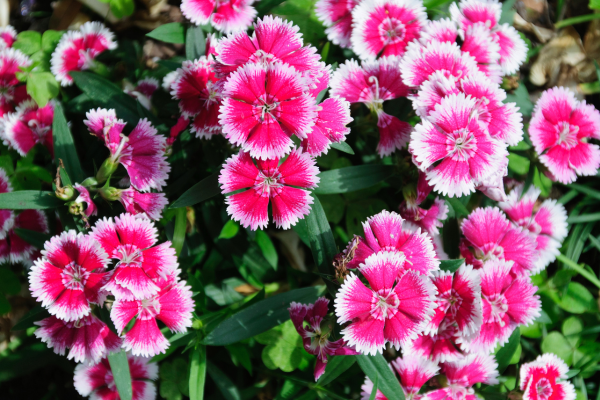
Dianthus (Dianthus chinensis), also known as ‘Pinks,’ come in pink, red, white and bicolor. Snapdragons (Antirrhinum majus) come in bronze, pink, purple, red, rose, white and yellow. These along with Pansies (Viola x wittrockiana) and Violas (Violas), sometimes called ‘Johnny Jump Up,’ are popular in the winter landscape with their beautiful colors of apricot, pink, purple, rose, white, yellow and bicolor.
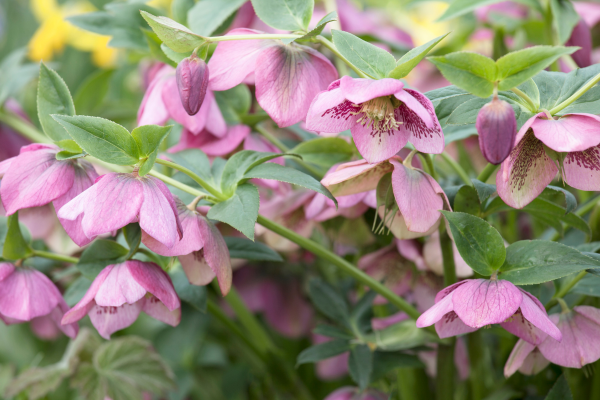
Lenten rose (Helleboris orientalis) is an evergreen perennial that grows in partial to full shade. It grows 1½ feet high by 2 feet wide, and can bloom from January to March. It blooms in burgundy, green, pink, purple and white; and is not a preferred plant of deer. These plants are a favorite for shade gardens. Master Gardeners love their nodding blooms.
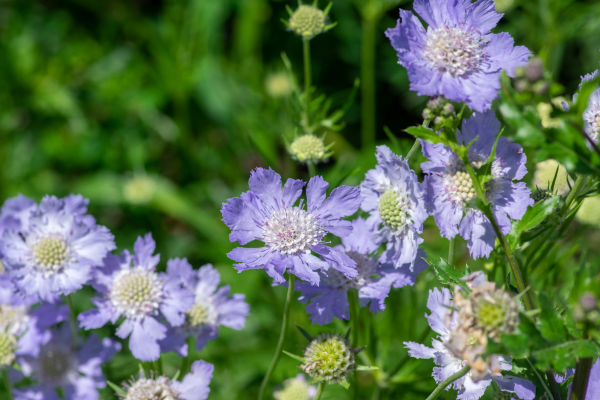
Pincushion flower (Scabiosa) is an evergreen perennial that loves the sun, and grows 1½ feet high by 1½ feet wide. It blooms June till frost in shades of blue and white. You may see blooms on them even in the snow. They are magnets for bees, butterflies and hummingbirds; but deer are not too fond of them.
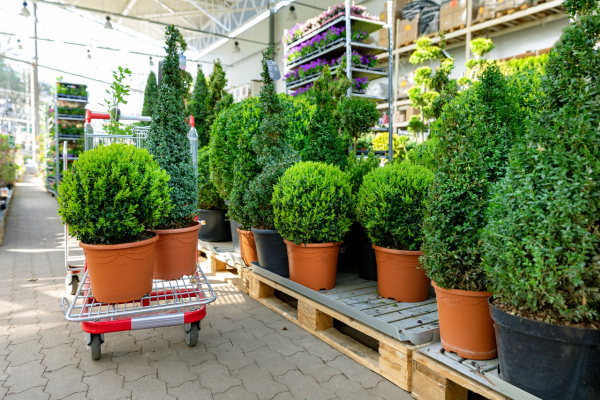
Boxwood (Buxus sempervirens microphylla) is a trouble free, evergreen shrub that can serve well in the shade or sun. It varies in size from 2 to 6 feet high by 2 to 4 feet wide. Birds are frequent visitors to their protective foliage, and deer will not choose these as their favorite. Remember, green is a vibrant color and is needed in any landscape to act as background for other beautiful fall colors to shine. Green also helps rest the eye when looking at a colorful landscape.
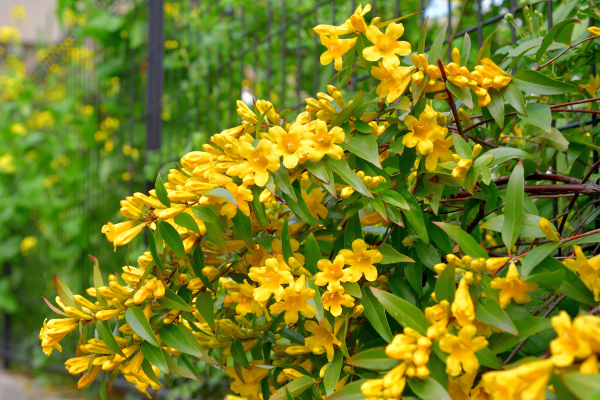
Carolina jessamine (Gelsemium sempervirens) is a twining, evergreen vine. This perennial plant grows up to 20 feet in length, and is capable of climbing trees, fences and other structures. The glossy, dark green foliage develops a slight purple or yellow cast during the winter. They have small, fragrant yellow flowers from December through May. This tenacious vine has no serious pests or disease problems.
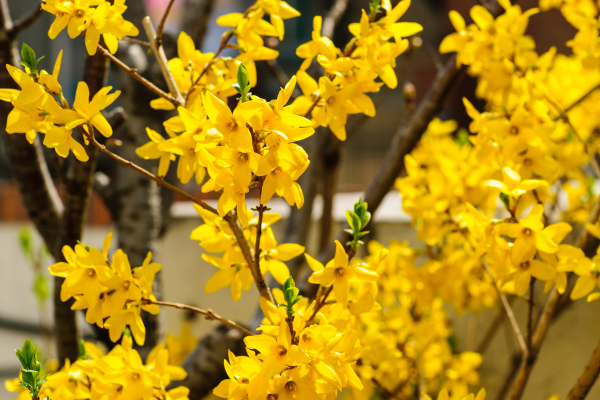
Forsythia (Forsythia x intermedia) is a deciduous shrub that thrives in sun to partial shade, and can grow 6 to 7 feet high by 5 to 6 feet wide. It blooms from February to March with yellow-green blossoms that are a food source for butterflies and the first arriving hummingbirds. During the winter, this plant makes a good background plant along a fence line. It adds great color to the yard, perhaps not for long, but is still worth it.
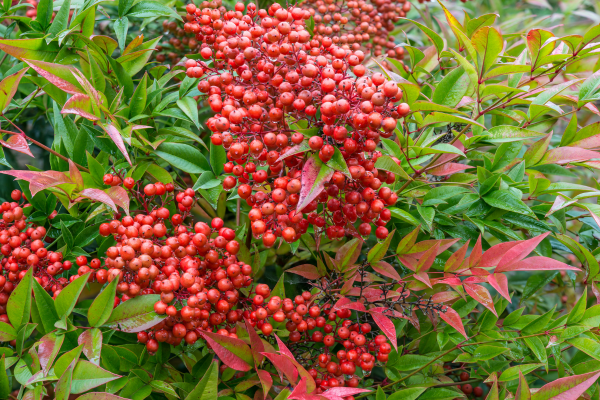
Nandina (Nandina domestica), also known as ‘Heavenly Bamboo,’ comes in a wide variety of sizes, from 1 to 5 feet high by 1 to 4 feet wide. The smallest variety is perfect for a container garden, while the largest makes an excellent backdrop for the fall garden. Other varieties that do well in this area include: ‘Harbor Dwarf’ (Nandina domestica), ‘Gulfstream’ (Nandina domestica) and ‘Compact’ (Nandina domestica). The winter draw of this hardy family of shrubs is the beautiful foliage with colors ranging from green, red, orange, maroon and many colors in-between.
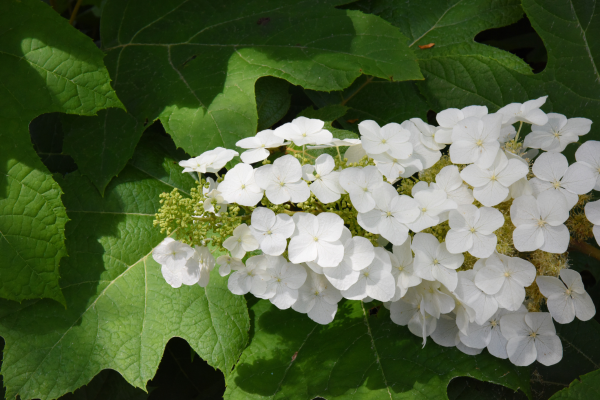
Oakleaf hydrangea (Hydrangea quercifolia) is a deciduous shrub for dappled shade to full shade that can grow 6 to 8 feet high by 6 to 8 feet wide. It blooms white from summer to frost; and the elongated blossoms will turn a papery manila color and remain on the shrub throughout the winter.
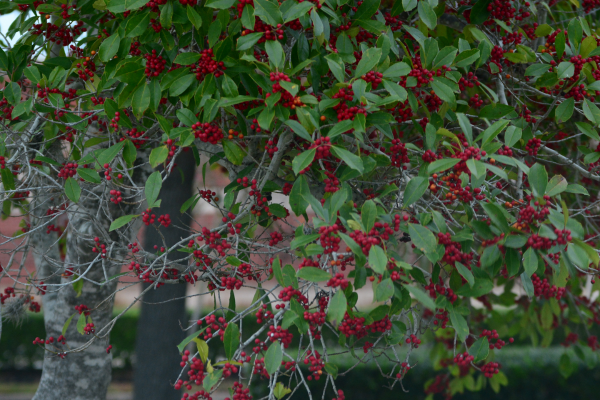
Possumhaw holly (Ilex decidua) is a deciduous shrub that can be pruned to grow into a small tree. Mature plants range from 8 to 20 feet high by 10 to 15 feet wide. Small white flowers bloom among the green leaves from March until May. The female plants have showy red fruit that persists in the winter until the birds or other wildlife devours them. The small, light green leaves make this a nice accent plant.
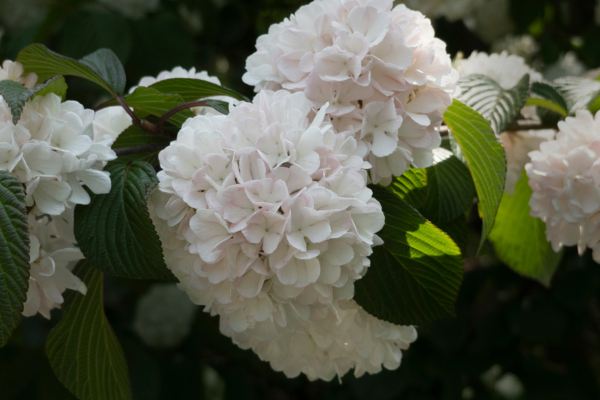
Viburnum has three varieties that are excellent in Parker County. Chindo (Viburnum awabuki) and Leatherleaf (Viburnum rhytidophyllum) are evergreen, while Snowball (Viburnum opulus sterile) is deciduous. Viburnums thrive in partial shade to dappled shade, can grow 10 feet high by 12 to 15 feet wide, and have distinctive white blooms. Their fragrance is a magnet for bees, birds and butterflies.
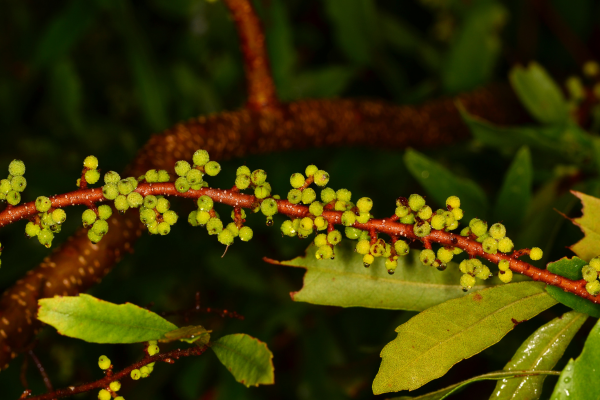
Wax myrtle (Morella cerifera) is a fast-growing, evergreen shrub or small tree native to coastal areas. Wax myrtles reach heights of 6 to 20 feet, and can tolerate both drought and poor drainage situations. The aromatic foliage is light olive green, and bluish-white berries appear on female plants in the winter. This ornamental is commonly used in the landscape as a screen or hedge.
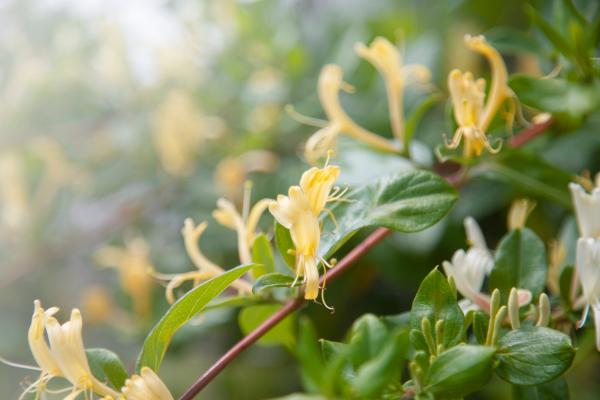
Winter Honeysuckle(Lonicera fragrantissima) is an evergreen shrub that grows in sun to partial shade. It grows 10 to 12 feet high by 10 to 12 feet wide, and blooms from January to February with fragrant, creamy, white blossoms. Its wonderful fragrance is a magnet for birds, butterflies and humans.
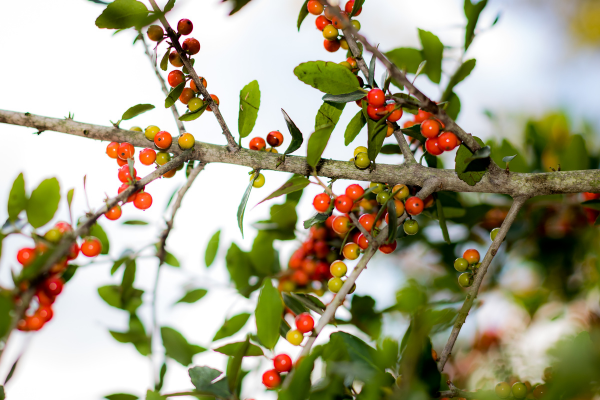
Yaupon Holly(Ilex vomitoria) is an evergreen shrub or small tree that can reach 10 to 20 feet high by 10 feet wide. Yaupons are slow-growing plants that need careful pruning if you do not want a thick, twiggy look. These hollies are typically used as an understory or accent tree. The bright red berries are a late-winter source of food for a variety of birds. The dark green leaves are generally shorter than 1½ inches long. The weeping yaupon ‘Pendula’ (Ilex vomitoria) can reach 10 to 20 feet high by 8 to 10 feet wide and is an interesting and lovely specimen small tree.
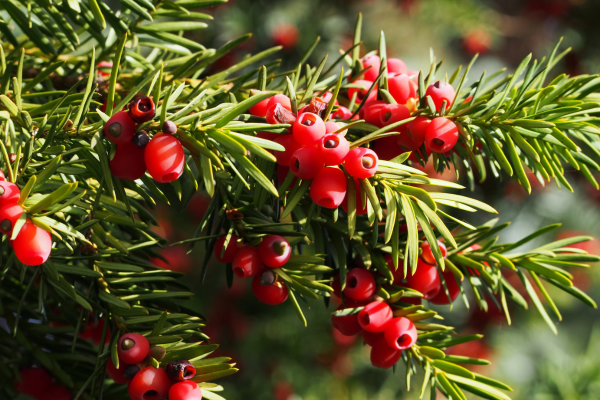
Yew(Taxus sp.) is an evergreen shrub that grows best in partial to full shade, and at maturity can be 10 to18 feet high by 5 to 6 feet wide. It does not flower but is another green shrub that is good in landscapes to show off the winter color of other plants; and it is a great addition for birds. While the yew is hardy in Parker County some Master Gardeners report that the ‘Podocarpus’ (false yew) is a more reliable plant.
The grass family, Gramineae, is immense. Their color, size and shape vary enormously, giving them great potential for enhancing the landscape. They have decorative inflorescence (seed heads) and are easy to maintain. Some varieties have stripes in ivory or white, and dashes of cream or yellow. They may be used as specimen plants or in containers. When planted in large groups as a screen, you may anticipate the waving plumes in winter. Gardeners in this area will be pleasantly surprised at the many grasses adapted here. Ornamental grasses are remarkably undemanding about water and soil preparation. Some of our native grasses may be used in the landscape as well. They are a habitat for butterflies and a place for small critters to have a home in your garden. It is a wonderful sight to see a cottontail bunny cautiously emerge from behind his protective grass.
Varieties that are favorites for all seasons include: Gulf Muhly ‘Regal Mist’ (sometimes called Autumn Blush Muhly), Lindheimer Muhly, Mexican Feather Grass, Dwarf Fountain Grass ‘Hameln’ and Dwarf Maiden Grass ‘Adagio’.
Gardening in Texas is challenging, but can be rewarding if you choose the right plants. So plan, design and follow through with plants that are proven successful in our zone and region. The plants discussed in this article are only a few you might consider for your landscape. Remember to always buy quality plants, and to shop at a nursery or garden store with personnel you can trust with your gardening questions. Good luck and happy gardening.
